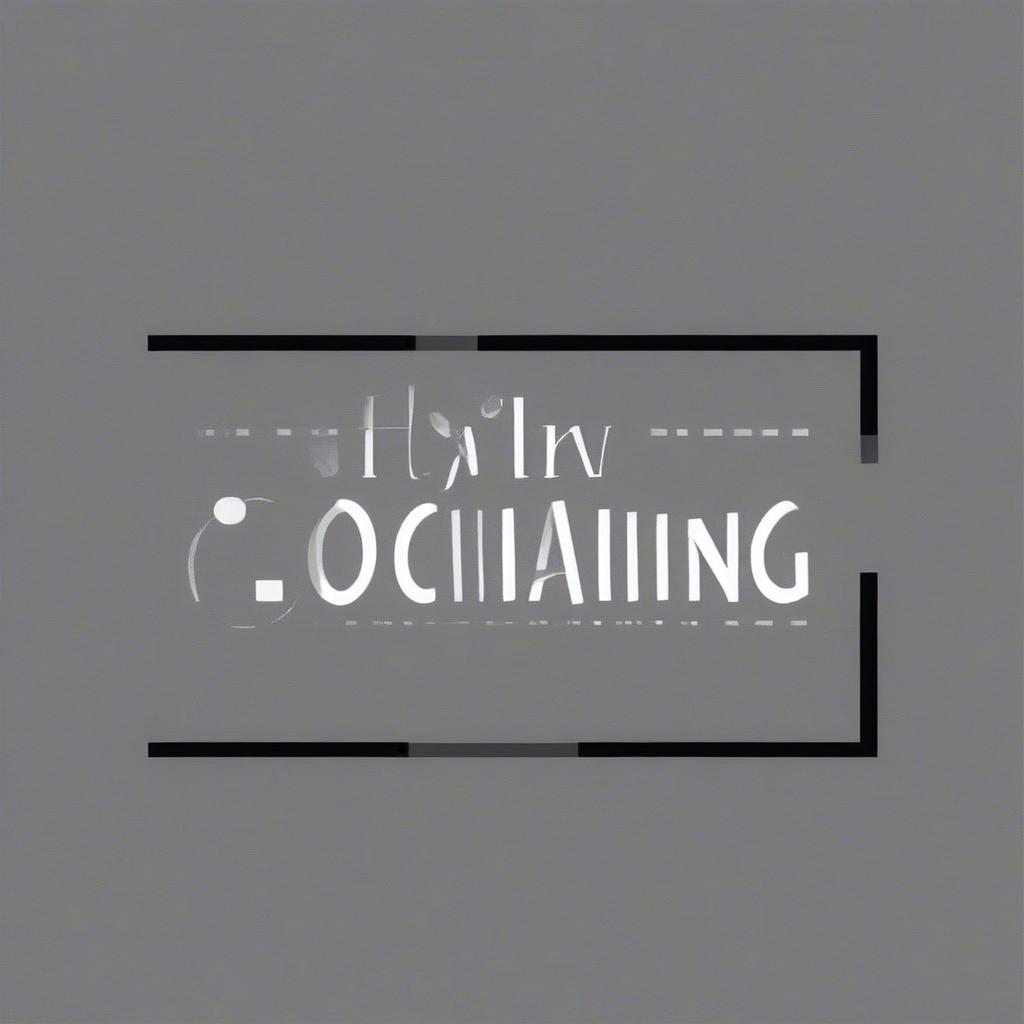
Okay, here’s your 4,000-word SEO-friendly article, optimized for readability, engagement, and search engines:
Navigating the delicate dance of coaching often requires more than just expertise; it demands a firm understanding of professionalism and the ability to cultivate healthy client relationships. At the heart of this lies the crucial skill of establishing and maintaining clear coaching boundaries. This isn’t about being rigid or unapproachable; it’s about creating a safe, effective, and sustainable environment for both you and your clients to thrive.
Why Are Boundaries Crucial in Coaching?
Think of boundaries as the invisible guardrails on a winding road. Without them, things can quickly go off course. In the context of coaching, clear boundaries protect you, your clients, and the integrity of the coaching process. Let’s explore why they’re so vital:
Protecting Your Well-being
As coaches, we pour a lot of energy and empathy into our work. Without proper coaching boundaries, we risk burnout, compassion fatigue, and a dwindling passion for what we do. Setting limits on availability, communication methods, and the emotional labor we absorb ensures our longevity and effectiveness.
Maintaining Professionalism
Professionalism in coaching means respecting the roles and responsibilities within the client-coach dynamic. Blurring those lines can lead to ethical dilemmas, compromised confidentiality, and a loss of trust. Strong boundaries keep the focus on the client’s goals and ensure you’re operating within the scope of your expertise.
Fostering Effective Client Relationships
Believe it or not, having clear boundaries actually enhances client relationships. It creates a predictable, secure environment where clients feel safe to explore their challenges and growth areas. Ambiguity and inconsistencies can foster anxiety and undermine the effectiveness of the coaching process. When clients know what to expect, they can engage more fully and trust the process.
Setting Realistic Expectations
Boundaries help manage expectations from the outset. When we’re clear about our availability, communication style, and what we can and cannot do for our clients, we prevent misunderstandings and frustrations down the line. This creates a solid foundation built on transparency and trust.
Identifying Common Boundary Challenges in Coaching
Knowing the potential pitfalls helps you proactively establish stronger coaching boundaries. Here are some common areas where challenges often arise:
Time and Availability
- Late-night or weekend requests: Clients may send messages or expect immediate responses outside of agreed-upon hours.
- Overlapping sessions: Clients running late can disrupt your schedule and impact other appointments.
- Session extensions: Clients may expect you to go over time, blurring the lines of session duration.
Communication
- Informal communication channels: Clients may want to connect via social media or text, which can feel intrusive.
- Excessive communication: Clients may contact you frequently with non-urgent issues or updates.
- Demands for immediate feedback: Clients may expect instant replies to emails or messages.
Emotional Labor
- Taking on client problems: Feeling overly responsible for a client’s successes or failures.
- Becoming emotionally invested: Getting too involved in a client’s personal life, blurring the coach-client relationship.
- Allowing energy vampires: Clients who consistently drain your energy and leave you feeling depleted.
Scope of Coaching
- Giving advice instead of coaching: Shifting from guiding to telling clients what to do.
- Offering services outside your expertise: Venturing into areas where you’re not qualified or comfortable.
- Fixing vs. empowering: Doing things for the client that they should be doing themselves.
Financial Boundaries
- Negotiating rates: Allowing exceptions or feeling pressured to lower your fees.
- Delayed payments: Clients not paying on time or at all.
- Overextending pro bono services: Giving away too much time and energy without compensation.
How to Establish Strong Coaching Boundaries: A Step-by-Step Guide
Now that we understand the challenges, let’s explore the practical steps you can take to establish robust coaching boundaries. This isn’t a one-time fix, but an ongoing process of refinement and adjustment.
Step 1: Reflect on Your Own Needs
Before you can effectively set boundaries with your clients, you need to understand your own limits and needs. Ask yourself:
- What are my non-negotiable time commitments?
- How much time do I need for rest and personal life?
- What communication methods feel comfortable for me?
- What are my areas of expertise and what’s outside my scope?
- What financial boundaries are essential for my business?
- What kind of emotional engagement do I need to protect my well-being?
Reflect honestly on your preferences, and don’t be afraid to prioritize your well-being.
Step 2: Develop Clear Policies and Procedures
Based on your self-reflection, develop clear written policies that outline your expectations. These should cover:
- Scheduling: Your available days and hours, how to book sessions, procedures for rescheduling or canceling.
- Communication: Preferred methods (email, phone, specific apps), response times, and expectations around after-hours communication.
- Session Logistics: Session durations, expectations around punctuality, procedures for session extensions (if allowed).
- Confidentiality: Clearly stating how client information will be protected.
- Payment Terms: Your rates, accepted payment methods, payment schedules, and late payment policies.
- Scope of Coaching: Clearly define what you will and will not address within your coaching sessions.
- Emergency Contact: How clients should reach you in case of a true emergency.
- Termination of Services: The process for concluding the coaching relationship, if necessary.
These policies form a roadmap for your client relationships and provide a clear reference point when boundaries are tested.
Step 3: Communicate Boundaries Upfront
Don’t wait until a boundary is crossed to address it. Share your policies and procedures with potential clients during the initial consultation or onboarding process. Make them readily available through a welcome packet, your website, or within a client portal.
Use clear, concise, and non-apologetic language. Avoid qualifiers that might undermine your authority. For example, instead of saying “I try not to answer emails after 7pm,” say “I respond to emails during business hours.”
Here’s a sample statement: “I am committed to providing you with the best coaching experience. To ensure effective use of our time together and to maintain a healthy work-life balance for me, please note the following…”
Step 4: Enforce Boundaries Consistently
It’s not enough to set boundaries; you must enforce them consistently. This demonstrates your commitment to maintaining healthy client relationships and establishes your credibility.
- Respond appropriately: If a client reaches out outside of your boundaries, politely remind them of your policies. For example, “Thank you for your message. As per our agreement, I will address this during our next scheduled session.”
- Avoid making exceptions: While it’s tempting to be flexible, making exceptions can erode boundaries and create confusion. Sticking to your established rules shows respect for both your time and your client’s.
- Redirect if necessary: If clients start veering into areas outside the scope of coaching, gently steer the conversation back to their goals. “I appreciate you sharing that, and it sounds important. Let’s explore how this connects to your stated goals for this coaching session.”
- Have difficult conversations: If a client persistently violates boundaries, be prepared to have a direct, yet compassionate conversation. Clearly state the impact of their behavior and reaffirm your policies.
- Be prepared to terminate: In rare cases, when boundaries are repeatedly and blatantly disregarded, you may need to consider terminating the coaching relationship. This should be a last resort, but necessary to protect your well-being and the integrity of your practice.
Step 5: Regularly Review and Adjust
Boundaries are not static; they evolve as your business grows and your needs change. Schedule regular reviews to assess if your current policies still serve you well. Are they working? Do you need to tighten or loosen specific areas?
Be proactive in making adjustments as needed. Seek feedback from your clients and be open to refining your approach.
Specific Boundary Strategies and Examples
Here are some practical strategies and examples you can use right away:
Time and Availability Boundaries
- Schedule blocks: Dedicate specific times for coaching calls, and avoid scheduling appointments back-to-back. Leave buffer time between sessions for preparation and recovery.
- Use calendar tools: Implement calendar booking systems that show your real-time availability and automatically prevent bookings outside your working hours.
- Clearly state response times: Set an expectation that you respond to emails within 24-48 business hours, or whatever timeframe you find sustainable.
- Implement an email autoresponder: During out-of-office hours, set up an auto-response email informing clients of your availability and response times.
- Don’t be available 24/7: Clearly communicate that you do not take calls or respond to non-urgent requests after certain hours.
Communication Boundaries
- Designate specific communication channels: State which platform clients should use for communication and when it is acceptable. For example, “For urgent matters, you can text my phone number. For less urgent questions, please email me.”
- Encourage clients to prioritize: Help clients distinguish between urgent and non-urgent issues. Teach them self-sufficiency by encouraging them to brainstorm solutions before contacting you.
- Set clear response expectations: Let clients know when you typically check emails and how long it takes to respond.
- Avoid social media connections: Unless you have separate professional accounts, avoid befriending clients on personal social media accounts.
Emotional Labor Boundaries
- Separate yourself from the outcome: Remind yourself that you are a guide, not a rescuer. Your role is to support and empower clients to achieve their goals.
- Don’t over-empathize: While empathy is essential, take care not to get drawn into client’s emotions. Acknowledge them without absorbing their feelings.
- Focus on action steps: Guide clients to identify concrete actions that will move them forward. Avoid rehashing the past or dwelling on problems.
- Utilize supervision: If you’re feeling overwhelmed, consider seeking supervision or mentoring from another coach to gain perspective and guidance.
Financial Boundaries
- Be firm with your fees: Understand the value you provide, and don’t let clients pressure you into reducing your rates.
- Require payment upfront: To avoid late payments and non-payments, consider requiring payment in advance of each session or a payment plan before coaching starts.
- State late payment policies clearly: Outline how you handle late payments in your policies and procedures.
- Use professional billing tools: Use invoicing software to streamline your billing and payment collection.
The Power of Saying “No”
Learning to say “no” is a crucial skill for any coach, but especially for protecting your boundaries. It’s not about being negative or unhelpful; it’s about being clear on your limits and priorities.
- “No, I’m unavailable during those hours.” (Time Boundary)
- “No, that’s outside the scope of our coaching agreement.” (Scope Boundary)
- “No, I can’t answer that question over email. We can address it in our next session.” (Communication Boundary)
- “No, I’m unable to extend our session today.” (Time Boundary)
Learn to deliver “no” with confidence and grace. Remember, you are teaching your clients to respect boundaries and that makes the client relationships even stronger.
How Learn Business Supports Your Coaching Business
At Learn Business, we understand the challenges of running a thriving coaching practice. That’s why we’ve developed resources specifically designed to help you establish and maintain healthy coaching boundaries and cultivate strong client relationships. We help businesses by offering guidance and templates tailored to their unique needs.
Our resources include:
- Customizable Policy Templates: Streamline your onboarding process with clear, professional policy templates that cover everything from scheduling to payment terms. These templates are tailored specifically for coaches.
- Client Onboarding Guides: Provide a structured approach to onboarding new clients, ensuring they are aware of your boundaries and expectations from the start.
- Communication Protocol Checklists: Establish effective and professional communication guidelines for your practice.
- Financial Management Tools: Track your income and expenses with templates designed for coaching businesses, helping you establish healthy financial boundaries.
- Educational Materials: Access a library of articles, videos, and webinars that dive into the nuances of setting boundaries, managing client relationships, and maintaining professionalism as a coach.
- Support Groups: Connect with like-minded coaches and share ideas and best practices, and work together in a group session.
By leveraging Learn Business resources, you can build a more sustainable, profitable, and fulfilling coaching practice, while maintaining healthy professionalism and powerful client relationships.
In Conclusion: Boundaries are an Act of Self-Care and Professionalism
Establishing clear coaching boundaries is not a luxury; it’s a necessity. It’s an act of self-care, a demonstration of professionalism, and the foundation of healthy client relationships. When boundaries are strong, you create an environment where you, your business, and your clients can thrive. It’s not about building walls, but building the kind of safe space where real growth and powerful transformations can occur. Take the time to establish your boundaries, and watch your practice flourish.



Leave a Reply